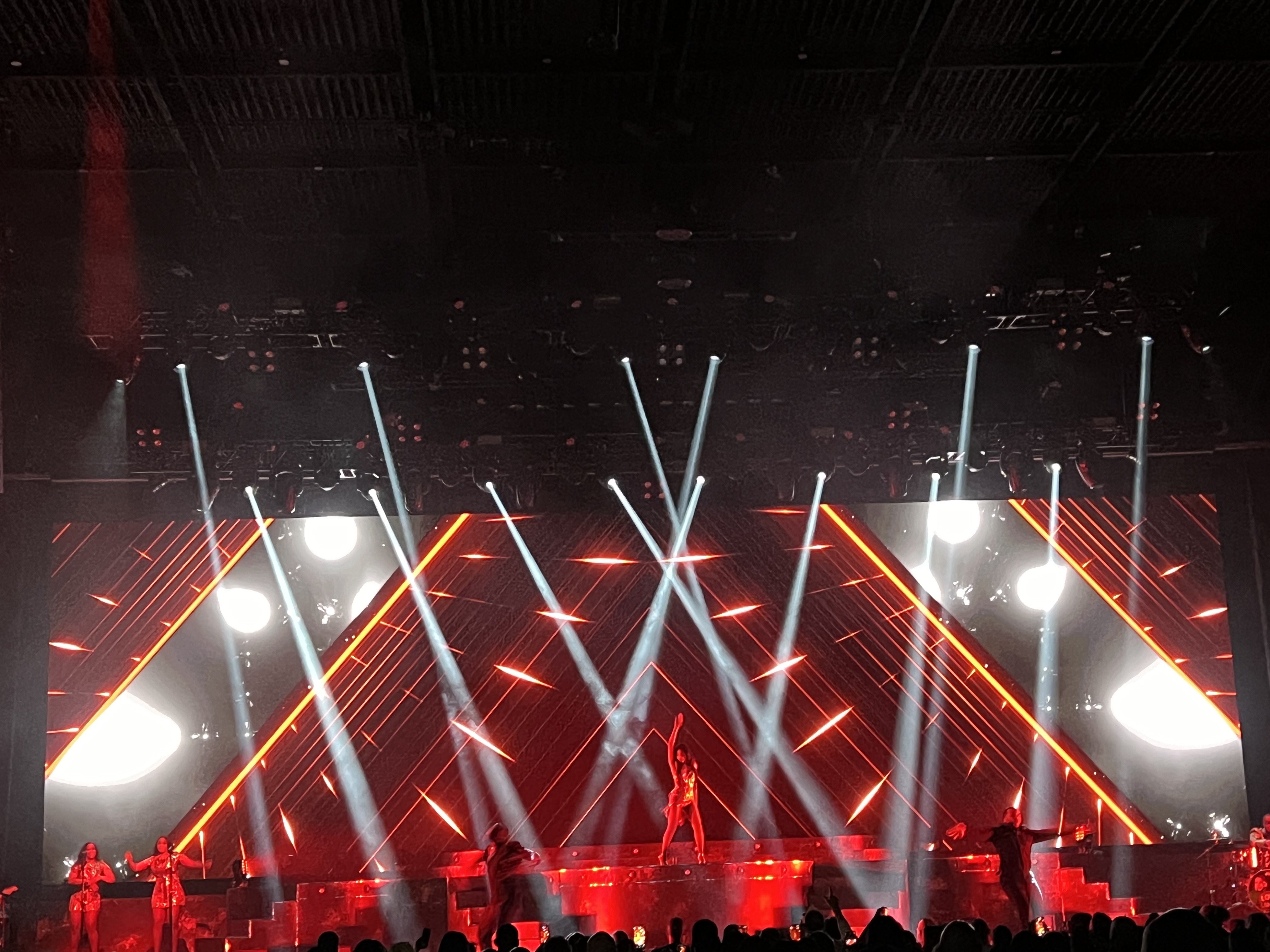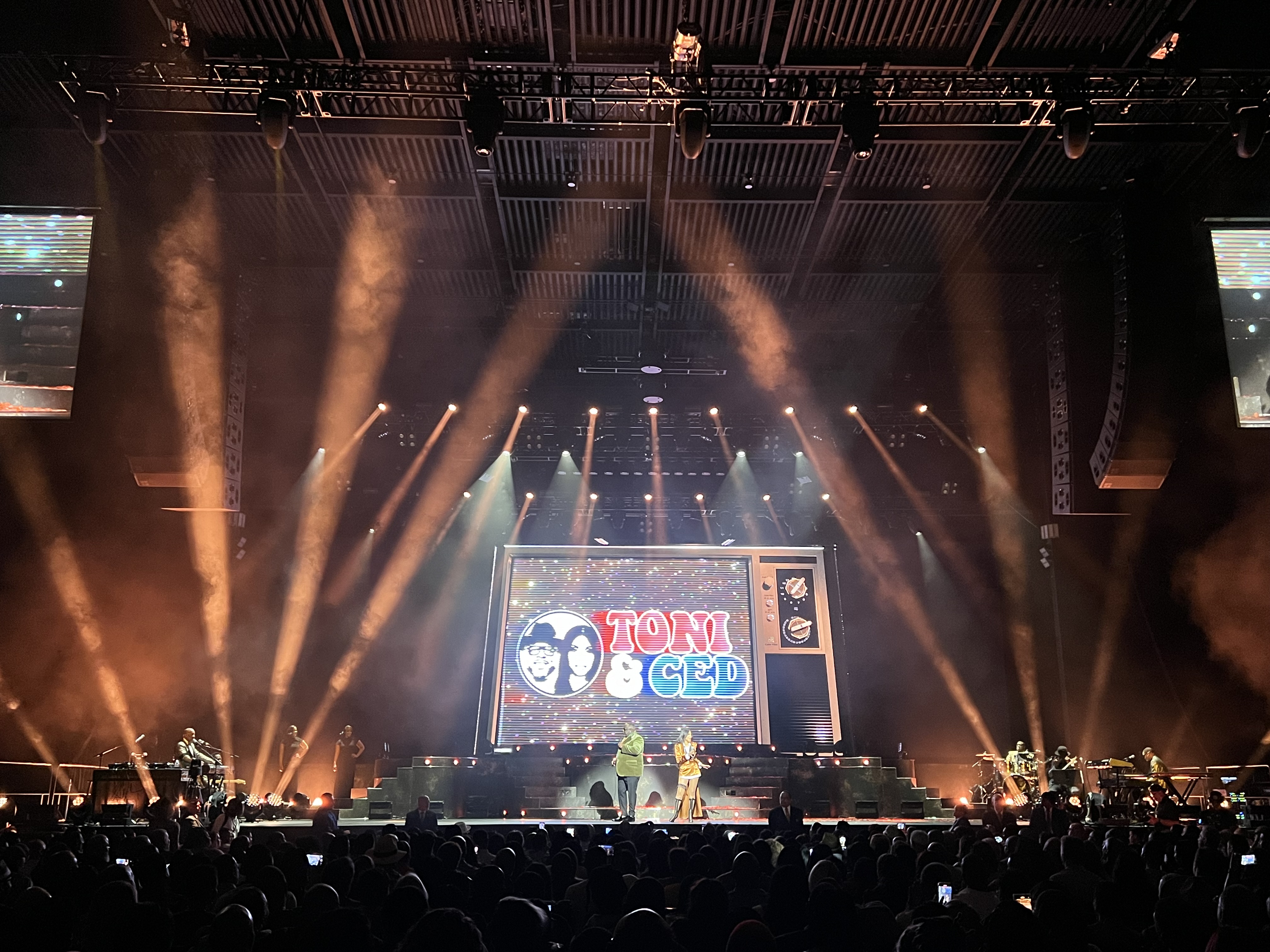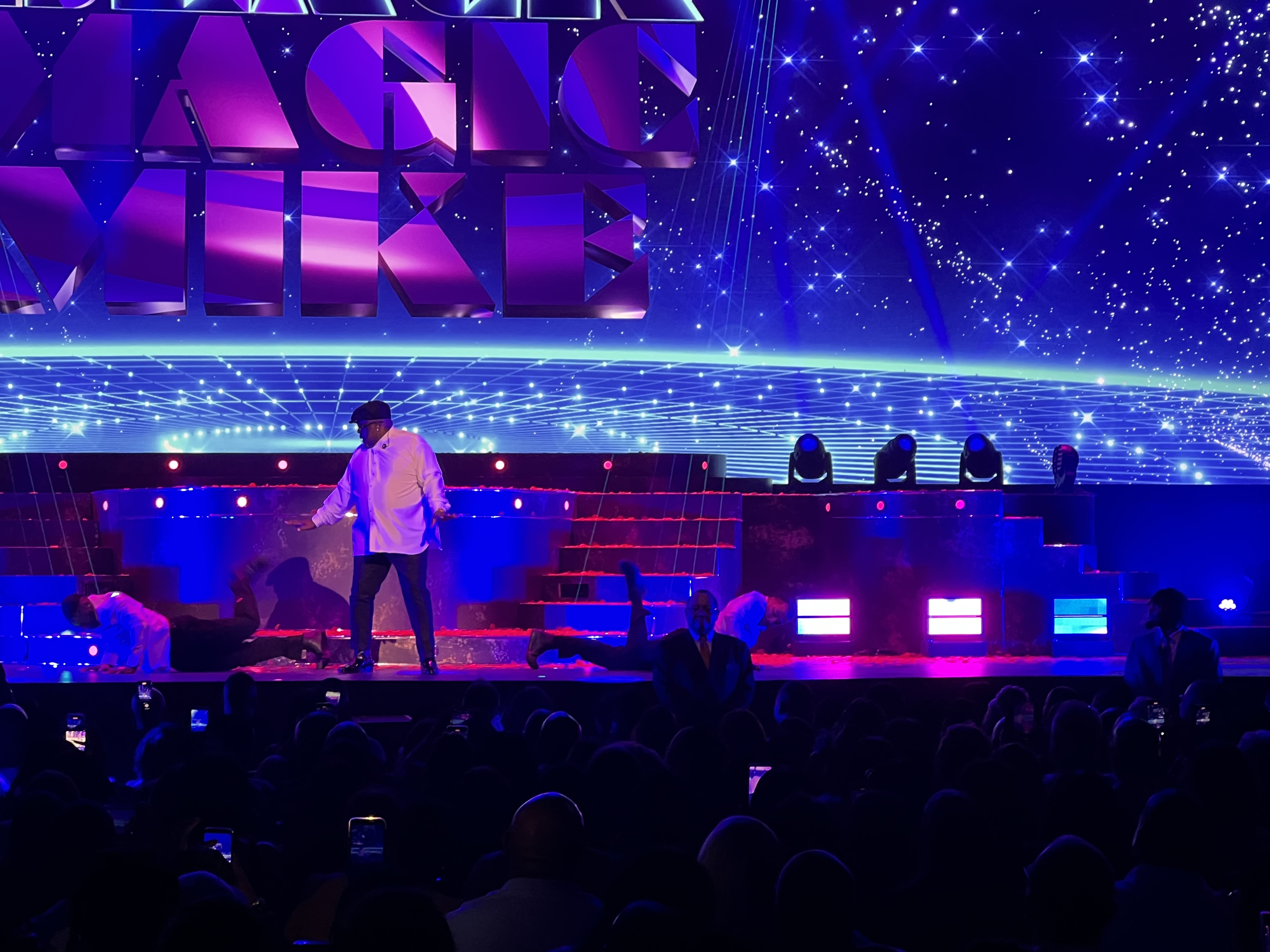JDC2 IP Makes U.S. Live Show Debut with Love & Laughter in Las Vegas
October 3, 2024

“It’s like having JDC1’s cooler, older brother,” praises LD Ryan Healey
When Love & Laughter, a collaboration between R&B singer Toni Braxton and stand-up comedian Cedric the Entertainer, took up a Las Vegas residency in the spring, the demand for tickets was such that they are now undertaking a repeat season in the autumn.
The venue was the 3,200-seat Chelsea theatre at the Cosmopolitan Hotel, and the shows marked the American concert debut of GLP’s JDC2 IP versatile new hybrid strobe – specified by lighting designer Ryan Healey, who had been brought in by the show’s director, Mark Swanhart.
Healey, whose work ranges from global esports events to TV spectaculars, adopted them following a demo set-up by GLP’s Rick Potter. “I was honored to be the first to have my hands on one – they totally impressed me and Joe [Holdman, lighting programmer]. They had so much potential use for our show.”

Twelve of the fixtures, along with 12 each of the impression X5 and X4, provided by LA-based Volt Lites (from its warehouse in Las Vegas) formed an alluring floor package – and a bonus for Healey was that JDC2’s forbear, the JDC1, features in the venue’s fixed overhead rig to help provide a homogenous design.
The LD is no stranger to GLP’s dynamics and build quality. “Since I’ve been working professionally, there’s barely been a show that hasn’t had a GLP product on it,” he says. “The X4 became a standard workhorse and now the X5 Series will become common on shows that we do. As for the X4 Bar 20 and JDC1, they totally changed the game.”
Although Vegas is his first experience of a residency, Healey has enjoyed a close working relationship with Mark Swanhart in both the TV and experience worlds. “I missed live work, and when this residency came along it was a perfect opportunity [to re-engage] with the entire team I’d been working with,” he explains.
Knowing the ground package had to work harmoniously with the overhead rig, he says: “When the JDC2 IP came along it was the perfect combination: a floor package that was unique to the show which would interact with the existing overhead and feel like one complete design. With one fixture I could do so many different things… the JDC2 dominates the whole show.”
“In particular I was super-impressed with the DigiFX [engine], the brightness, and fact that the plates [above and below the strobe line] are so large. I was looking for something that could be seen from the very back of the house and which had a large impact from the floor.”
He continues: “With Toni’s musical direction there were a lot of musical enhancements for which the JDC2 is a perfect foil – and it turned out being a real showstopper, which is used in every number without ever looking the same twice.”

Having DigiFX on board enabled him to throw different patterns. “It was like having the cooler older brother to JDC1 playing on the floor,” he remarks.
As for the impression X5, programmed in Mode 6, they provided full pixel control and were primarily used for backwashing the band, as well as side-lighting the dancers. “They were perfect for that,” Healey says. “The benefit to using such a fixture was that when there were no dancers we could use them as a beam fixture, or a large-faced pixel-controlled FX fixture. Even when we were using them as dancer sides, we could do some fun FX with the pixel controls that could read on dancers’ bodies and costumes.
“We also shut off the outer ring of pixels and then they looked like a smaller wash light – a whole different fixture with a pencil-tight beam that could be seen from the back of the theatre.”
The JDC2 IPs were programmed on a grandMA3 (95% timecode in Mode 4 – Segment 12/24) by Joe Holdman. “This gave us full pixel control alongside the built-in DigiFX,” he explains. It was then left to board operator Mo Epps to animate them.
“Being the stellar programmer that he is, Joe came up with things that I wouldn’t even be able to think of. He’s a genius,” notes Healey.
“With the DigiFX being scalable and moveable on the face plate, Joe created musical hits where the DigiFX could move left to right, up and down, grow bigger or grow smaller. It was a super cool new way to pick up on something musically and also have something visually unique from what you can get out of a regular flare.”
Notes Holdman: “The way that the DigiFX features are implemented and interact with pixel/strobe control is similar to other strobe units’ built-in FX macros, so it’s a very approachable fixture.”
In summary, he says: “The JDC2s were a vital part of the show, adding much-needed punch and dynamics to the floor package – and when running the JDC2s alongside the JDC1s, the response was identical.”
The DigiFX functionality had added a surprising benefit, he elaborates. “Typically, I avoid any built-in FX macros, as they’re usually things that I can create and have finer control over with the console’s FX engine. The DigiFX features, on the other hand, allow for effects that aren’t possible with direct DMX control of pixels. We were able to use a bunch of the clips in various places throughout the show – and it looked great!”
According to Ryan Healey, all the production creatives were delighted. “I’d specify them again a million percent in both the TV and live spaces; if you want to fill an arena with a lot of light I can envision having hundreds of them on a single back wall truss, running video content through them,” he concludes. “And because the JDC2s are IP rated, I can imagine them fitting in nicely with a lot of the projects I do outdoors.”